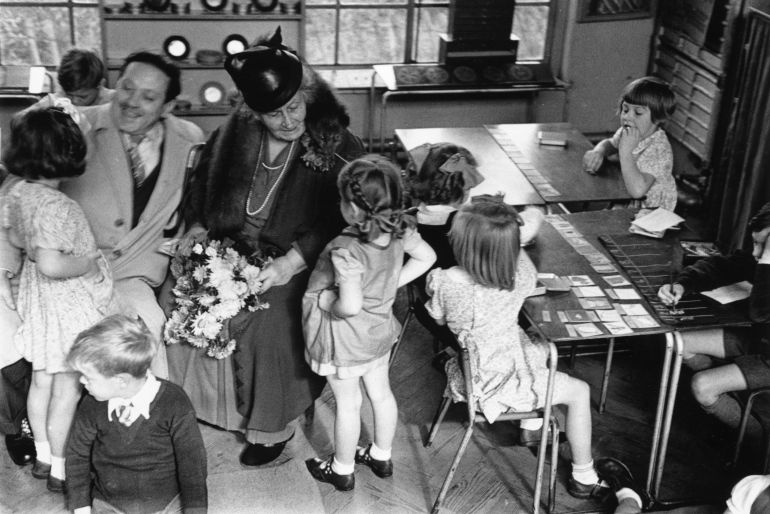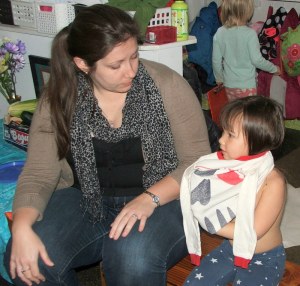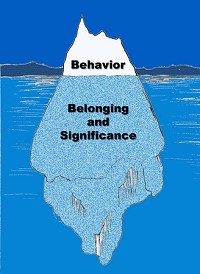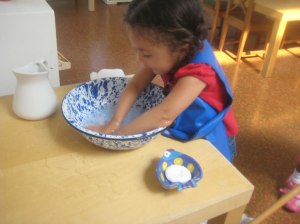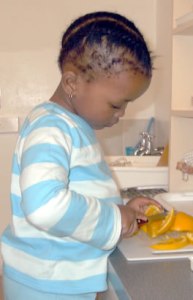 I have a wonderful quote on a cabinet at school that says something like: “Knowledge comes from experience, and experience comes with mistakes.” I would add, that this is also true for confidence.
I have a wonderful quote on a cabinet at school that says something like: “Knowledge comes from experience, and experience comes with mistakes.” I would add, that this is also true for confidence.
As a parent, we all want our children to be confident. Not foolish or reckless, but willing to walk in, sit down and try.
As a teacher of preschoolers for a long time, this is something I expect from all preschoolers. They may be afraid/angry (crying), but they are also curious and intrigued by new activities and people.
I remember one little girl, years ago, who came for a visit with her dad. She made it very clear that she wanted no eye contact or conversation with me, and sat behind her father. He, of course, kept trying to coax her out. This is not my first rodeo, so I knew to get something out, put it on a rug, and enjoy exploring it. It almost doesn’t matter what I got, it is my interest that is intriguing. Of course, she eventually crept out and joined in. I knew not to try to “make friends” unless she initiated it. That was not what we were doing. We were exploring together. My job was to present the opportunity (“create the environment” is what Montessorians say) and then wait, but not passively. In a Montessori classroom, the children are attracted by the materials, and the activity of the other people, particularly the other children. That is why it is so important to have “experienced” children; i.e multi-aged grouping, but that is another essay. 🙂
We create an interesting environment, with busy people in it, and there is so much to watch and touch, we hope that the child will be drawn in, without any coersion from any of us. It happens, with time, for almost everyone. (For those who are not interested in anything, there is not much I know to do.)
Back to confidence. It takes confidence to enter in, and it takes entering in to build confidence. This is a hard one. It would be nice if we all learned confidence with every move we made, from birth, but that cannot always happen, for many reasons.
So, sometimes, we have to create the environment and wait. Not everyone likes the stretching it takes to take that first step; it is uncomfortable. This reminds me of a time in a new school. I was about 12. For many reasons (some to do with my lousy eyesight, and how long I went without glasses before anyone noticed how blind I am!), I felt terrible at “sports” or games. In a new school, I had a new game (hockey), which I was sure I would hate as much as every other game (kickball, softball, dodgeball…..) My stance was to stand as far away from the action as possible, and endure. Fortunately, I had a wonderful coach. She took the time to put me in a position and explain to me what my job was. And to make sure it was very simple: “If you get the ball, pass it to this person.” That’s it. Then, she followed along a bit, and told me again, when the time came. After one success, my confidence grew, of course, and the fun of being part of a team was evident, for the first time. I never was a hockey star, but I loved every game I played from then on.
I will say, she didn’t give me the option of sitting out every game until I graduated. She didn’t give me pity or too much help. She didn’t say that, since I was skinny, nearsighted, and terrified looking, I should just give it up, even though everyone else had been playing since Kindergarten. She certainly didn’t offer to do it for me. She gave me a simple task, and expressed confidence that I could do it. Then she let me go. She didn’t give me a trophy, either, but a smile. (Thanks, Mrs. Callahan!)
So, sometimes creating the environment includes expressing faith and then leaving them to it (How much instruction is needed? It is often hard to know….”Every unnecessary help is a hindrance.” Maria Montessori. That one is a moving target. We do get better with practice, and, observing. One answer might be: “Less than you think.”)
The goals: confidence, independence, new interests, joy.

